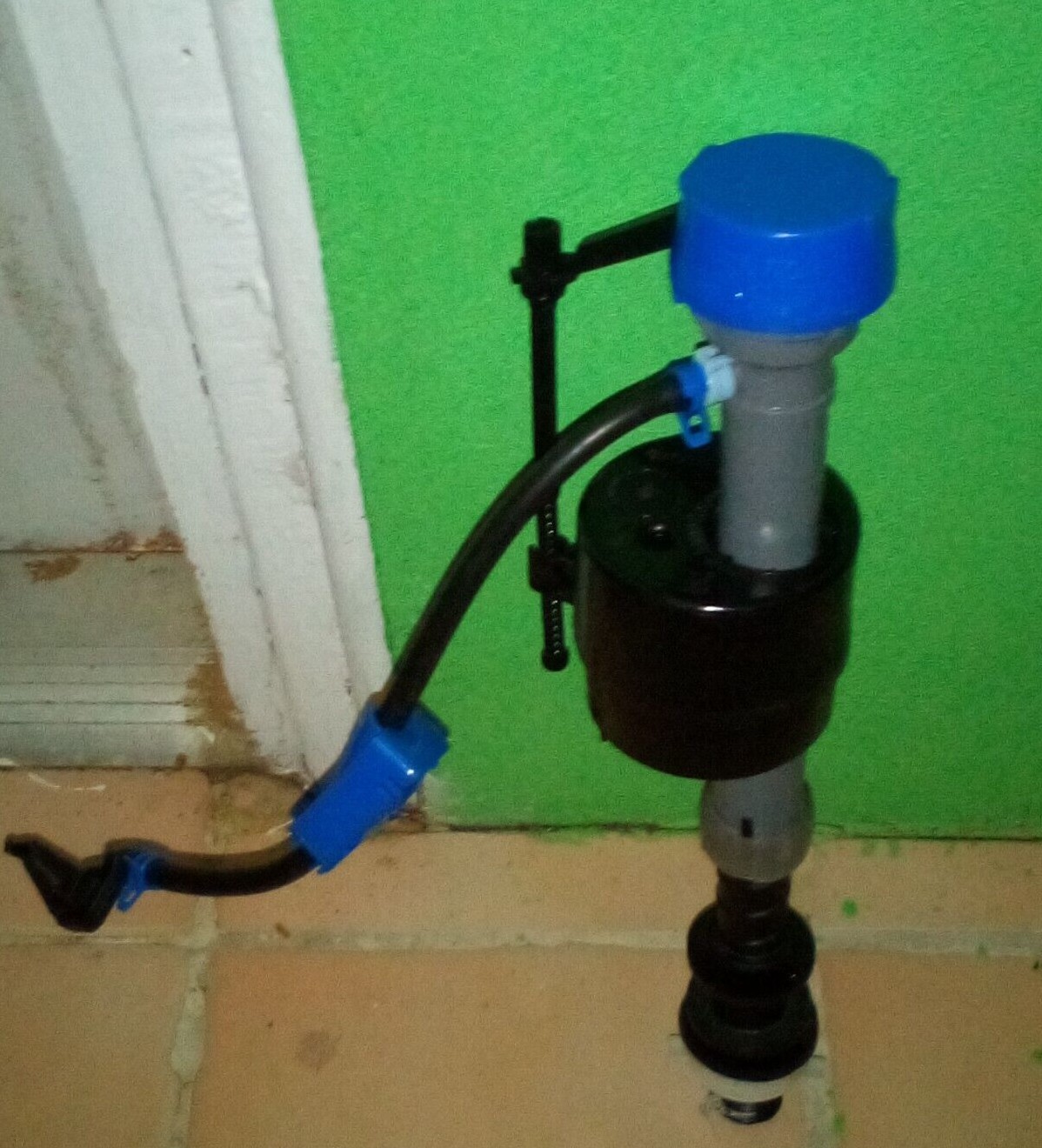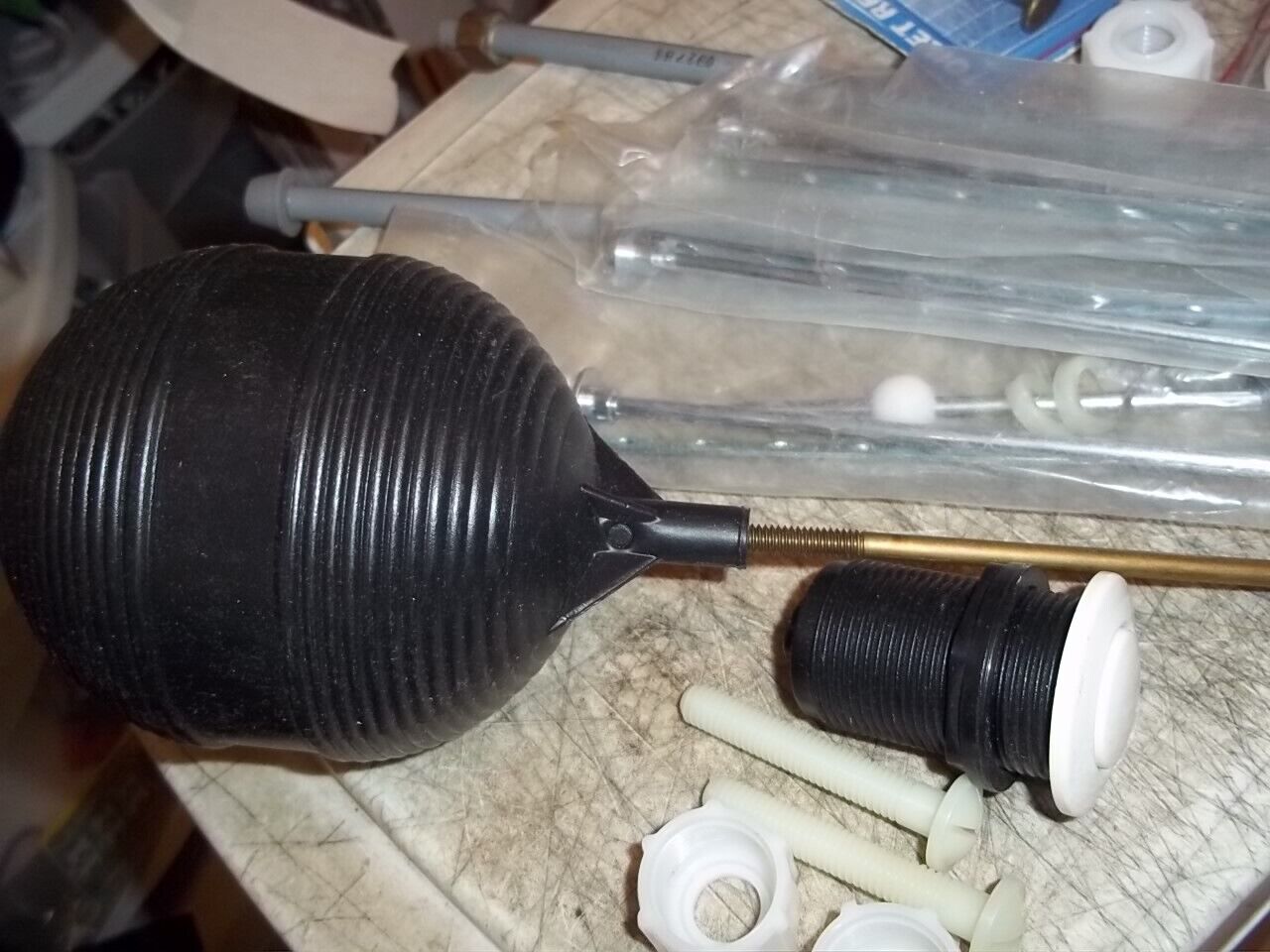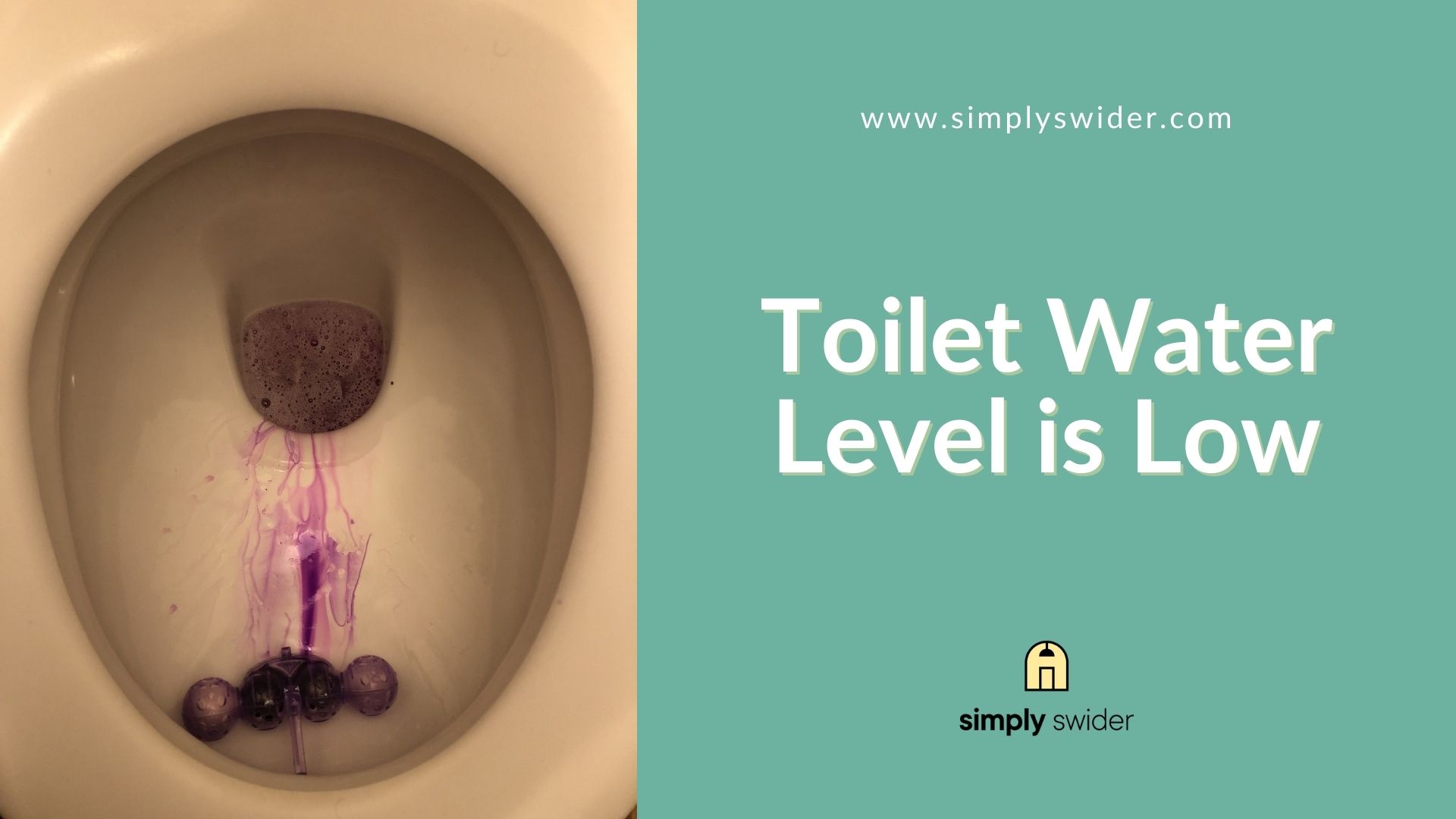Here’s a possible scenario:
You’ve just answered the call of nature, but then you notice something unusual—the water level in the toilet bowl is lower than normal.
When something like this happens, you should be concerned. But then, you must immediately figure out the cause of the problem and the solution.
Luckily:
We have the answers to both questions. Just stick around as we fill you in.
Table of Contents
Why Your Toilet Water Level is Low
A low toilet water level should be a cause for concern. So, here are some possible fixes. Fix or replace the faulty fill valve, fill tube and cracked toilet bowl. Also, fix the float ball, and ensure water is flows from the supply valve. In addition, try unclogging the toilet trapway and the sewer vent pipes.
Fix or Replace Faulty Fill Valve

Some fact:
Once you flush the toilet, the tank becomes empty and immediately starts refilling for the next flush cycle. The fill valve enables this refilling process.
When the valve develops a problem, it may not be able to supply enough water to the tank. This results in a low water level and a weak flush power.
In that case:
You’ll have to check the fill valve to see if it needs an adjustment or replacement. Usually, it is the tallest element inside the tank; thus, you can spot it easily.
Adjusting the Fill Valve
Some fill valves have a metal spring clip at the upper end that serves as a stopper. If you find the clip lower than it should be, a simple adjustment will solve the problem.
You must loosen the clip and raise it higher to increase the water level.
Now:
There are other types of fill valves that use a plastic screw in place of metal spring clips. This plastic screw can be turned left or right to lower or increase the tank’s water level.
Replacing the Fill Valve
If the problem persists after you increase the tank’s water level, the fill valve may be damaged. Therefore, you must replace it as soon as possible.
Luckily:
It takes only a few minutes to replace, and you don’t need any tools. Follow these easy steps:
- Shut the supply valve and flush the toilet. This is because you can’t work properly with water in the tank.
- There’s an opening at the bottom of the tank where the fill valve and the water supply meet. Unscrew the water supply from the old fill valve with your hand.
- Remove the fill tube from the flush valve and remove the fill valve from the tank.
- Place the new fill valve inside the tank and connect the fill tube to the flush valve.
- Connect the water supply to the new fill valve through the opening at the tank’s bottom.
- Open the supply valve and watch as the tank gets filled.
Note:
You can find replacement fill valves on Amazon and other e-commerce outlets.
Fix or Replace Damaged Fill Tube
Typically black in color:
The fill tube is a flexible plastic that runs from the fill valve to the flush valve. It controls the water flow from the flush valve to the toilet bowl.
When the tube is damaged or not connected properly, the water in the bowl might be too much or too little.
So:
If you notice that the water level in your toilet bowl is low, the fill tube is one of the first things to check.
Simply open the tank and check whether the tube is properly connected to the flush valve. If not, clip it firmly, and that should do.
However:
If the fill tube has a cut or is worn out, you must replace it immediately.
Replace Cracked or Broken Toilet Bowl
Although rare:
A cracked toilet bowl is another possible reason the bowl’s water level might be low. The crack can occur anywhere and can be difficult to detect.
This is especially when the crack is minor or occurs in a remote part like the base or back of the bowl.
So how do you diagnose a cracked bowl?
The most effective way to do this is to mop the toilet floor completely and ensure that nobody uses it. Next, check back on the toilet after a few hours.
If you find water on the toilet bowl’s base, the bowl will likely crack. Therefore, you must fix or replace it.
Now:
If the crack is above the water level and you feel it’s minor, you can try sealing it with a waterproof plumber’s putty.
Mind you:
You’ll be required to do this continuously, as the sealant is only a temporary solution.
Replacing a Broken Toilet Bowl
Ideally:
It would be best if you replaced the bowl regardless of the level of damage. This is because it bears a lot of weight from users and can completely break down when sat upon.
Replacing the toilet bowl is much harder than sealing it, but it’s nowhere near rocket science. So, you can replace it yourself.
However, if the toilet is the one-piece style (tank connected directly to the bowl), you must call a plumber.
That said:
Here’s a list of supplies you’ll need to replace a two-piece toilet bowl.
- Replacement toilet bowl
- Sponge
- Gloves
- Screwdriver
- Adjustment wrench
Now here’s a step-by-step process to replace the bowl:
- Shutoff the water from the supply valve, usually below the tank, and flush the toilet to empty the tank.
- Use a sponge to soak the remaining water left in the tank and the bowl. Ensure you’re wearing rubber hand gloves to protect yourself from germs.
- Unscrew the bolts that connect the water hose to the tank. Disconnect the hose from the tank.
- Remove the tank resting on the bowl. Be warned; the tank is heavy, so you must apply enough power to lift it.
- Using an adjustment wrench, unscrew the bolts holding the bowl to the floor and remove the wax on the toilet hole.
- Turn the new bowl upside down and apply a new wax ring around the hole on the base.
- Place the new bowl on the floor and ensure that it fits to the anchor bolts. Tighten the nuts to the bolts using an adjustment wrench. Do not tighten it too much, as it can crack the bowl.
- Reinstall the tank and the hose supply and open the supply valve.
Congrats, you’ve successfully installed your new toilet bowl.
Adjust the Float Ball

As the name implies:
A float ball is a round object inside the tank with a metal rod connected to the fill valve. It is responsible for controlling the water level in the tank.
Normally, the ball stays high up in the tank. This ensures the water level remains high and flows freely into the bowl.
However:
Sometimes, the float ball drops, resulting in a low water level in the tank and the bowl. In this case, you must open the tank and adjust the float ball.
The good thing is, adjusting the ball is straightforward and will only take a few minutes. Plus, the only tool you need for this is a screwdriver.
As already mentioned:
The float ball has a metal rod connected to the fill valve via a small screw. Simply unscrew it so that the metal rod can move freely.
Next, raise the rod until the float ball reaches the ideal water level. Normally, this should be a few inches below the tank lid.
Lastly:
Tighten the rod to the fill valve and close the tank, and that should be all.
Now:
Your toilet’s float ball may not have a metal rod attached to the fill valve. For such cases, refer to your user manual to learn how to adjust the ball.
Ensure That Water Flows From the Supply Valve
By now:
You may already be tired of hearing about the supply valve, as we’ve mentioned it several times. That’s because this little component is as important as anything else in the toilet.
Typically:
The supply valve (behind the tank) is used to shut off or allow water flow. So, if water must enter the tank and the toilet bowl, the supply valve must be open.
Anything other than this, your toilet bowl is bound to have a low water level.
As you can imagine:
You can fix this problem without breaking a sweat. Turn the supply valve until it goes full cycle, and the water should flow freely.
However:
If you try turning the supply valve and it refuses, it may be stuck due to minerals and needs fixing.
Here are the supplies you need to fix it:
- Hand gloves
- Screwdriver
- Towel
- Hot water
- Penetrating fluid
Once you’ve readied these supplies, start fixing the supply valve with these steps:
- Put the screwdriver in the screw of the supply valve and turn it to ensure that the screw is properly tightened.
- With your hand gloves on, soak the towel in hot water. Remove the towel and place it on the valve for about five minutes. This helps dissolve the minerals blocking the supply valve.
- Remove the towel and spray penetrating fluid on the valve. You can leave this for a couple of hours to allow the fluid to penetrate deeply.
- Rock the valve back and forth to loosen it. Slowly open the valve fully. You can do this repeatedly until the valve starts opening smoothly.
Unclog The Trapway
Also known as the toilet trap:
The trapway is a channel that runs through the opening at the bottom of the toilet bowl to the drain pipe. It can be easily clogged by tissue or paper towels, as these items do not break down quickly.
Also, if you have toddlers at home, you will likely encounter this problem from flushed toys. When clogged, clean water finds it difficult to enter the bowl.
Luckily:
You can easily diagnose a clogged trapway. Your bathroom, kitchen, and toilet usually have the same drain pipe.
So, check out the sink and tub in the kitchen and bathroom. If they’re draining properly, the toilet trapway is likely clogged.
To unclog the trapway, insert an auger inside the bowl until it reaches the hole at the bottom. Crank continuously so that every blockage is cleared.
Quick tip:
Whenever you mistakenly drop an object into the bowl, ensure you remove it before flushing. It might seem a little disgusting, but flushing the object will likely clog the trapway.
Clear Blocked Sewer Vent Pipe
A blocked sewer vent pipe is another rare cause of low water levels in the toilet bowl. The sewer pipe runs through the wall to the roof of the house.
Its job is to regulate air pressure and guide foul smells from the toilet away from your home.
You see:
The vent pipe has an opening on the rooftop. This opening may become clogged by different things. If there are lots of trees around your house, leaves may fall excessively into the pipe and block it.
Also, birds can sometimes build their nests on it, leaving no space for air pressure. There might also be a dead rodent inside the pipe.
One more thing:
The vent pipe can be worn out or broken, therefore leaking and reducing water pressure.
Consequently, it cannot send clean water back to the toilet bowl.
Now:
To fix this problem, you must go to the rooftop, which can be risky. So, ensure you try other fixes before heading to the roof.
You’ll need the following supplies clear the pipe:
- Ladder
- Standing platform
- Safety ropes
- Flashlight
- Plumber’s snake
- Toilet auger
Get this:
You are going to be moving your body throughout the process, so you need a standing platform and safety ropes.
Once you get to the roof, shine your flashlight into the pipe to see if it’s clogged. If yes, dip the plumber’s snake or toilet auger inside the pipe and unclog it.
Also, before leaving the roof, clear the leaves and other debris, so they don’t end up in the vent.
Note:
Call a plumber if the blockage is deep inside the vent pipe and the plumber’s snake can reach it. Also call a plumber when the pipe is worn out or broken and needs fixing.
Conclusion
A low water level in your toilet bowl indicates a problem with your toilet. But here’s how you can solve this problem:
- Fix or replace the faulty fill valve
- Fix or replace the damaged fill tube
- Replace cracked toilet bowl
- Adjust float ball
- Ensure that water flows from the supply valve
- Unclog the trapway
- Clear blocked sewer vent pipe
And that’s all there’s to know about the causes and solutions of low water level in the toilet bowl. If you have further questions or contributions, please reach us via the comment section below.
Frequently Asked Questions
There are several ways of fixing low water in the toilet bowl. This includes fixing or replacing the damaged fill valve, fill tube, and toilet bowl. Also, adjust the float ball and unclog the trapway and sewer vent pipe. Lastly, ensure that the supply valve is open.
The water level may become low because the fill valve, fill tube, and toilet bowl are damaged. Also, Lowered float ball, closed supply valve, clogged trapway and sewer vent pipe can cause low water level.
You can increase the water level by adjusting the fill valve and float ball. Also, you can do this by ensuring that the supply valve is fully open.
Yes, when the trapway is clogged, it prevents water from flowing freely into the bowl. Also, a clogged vent pipe can also cause low water flow.

